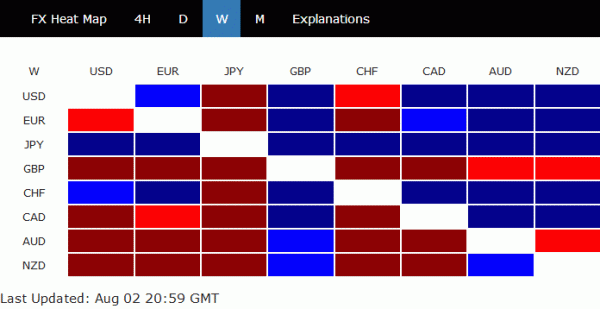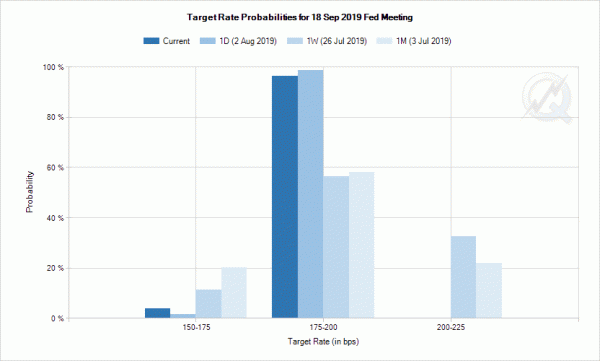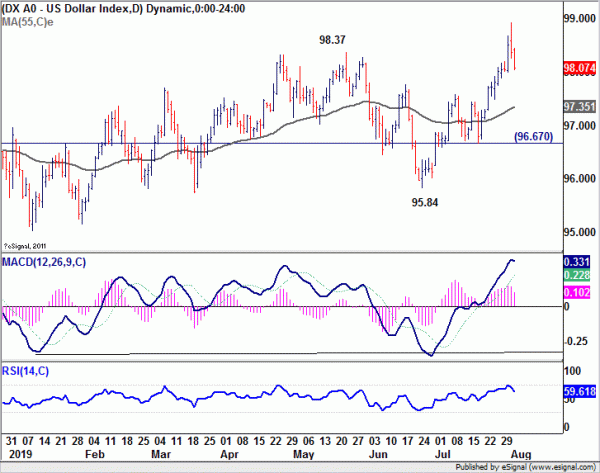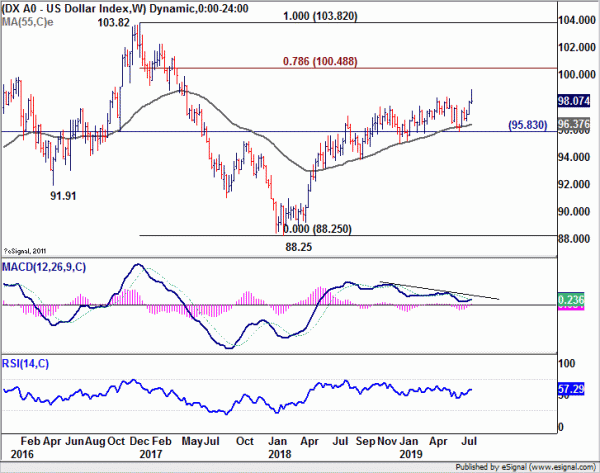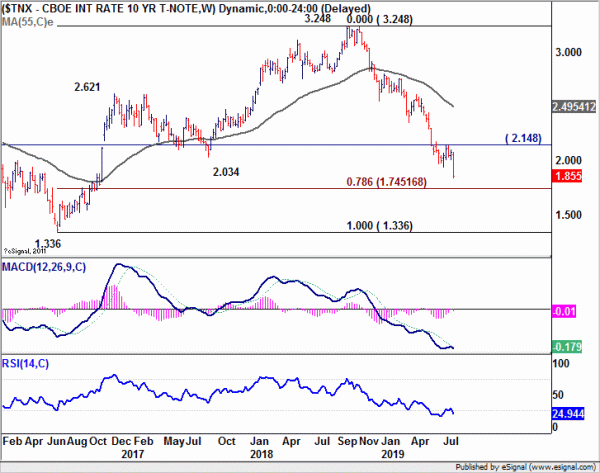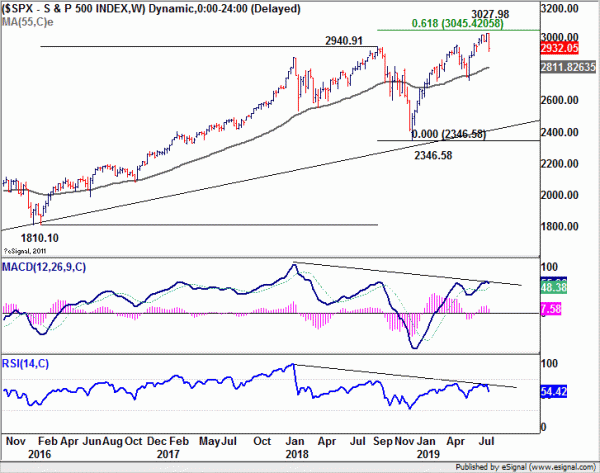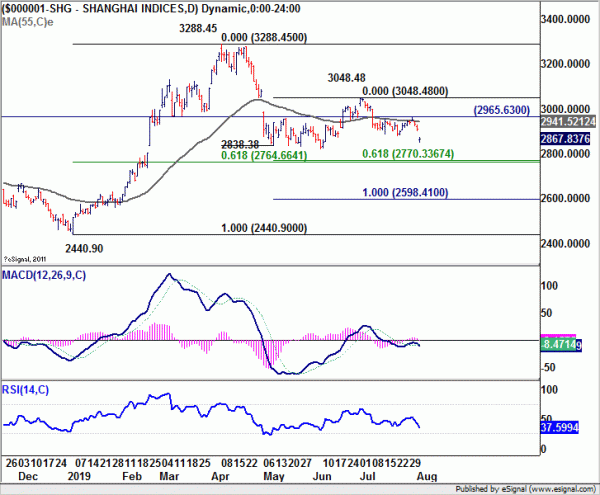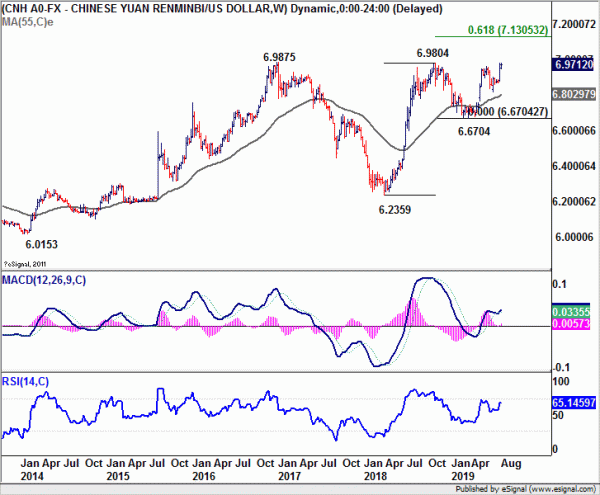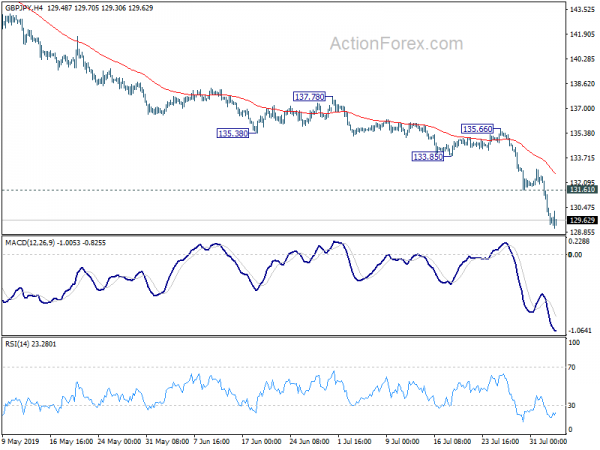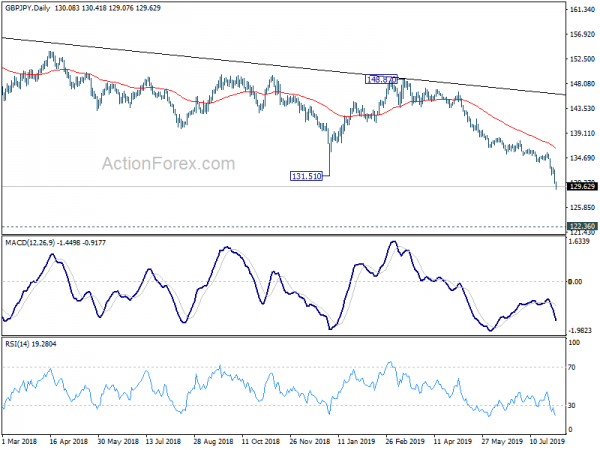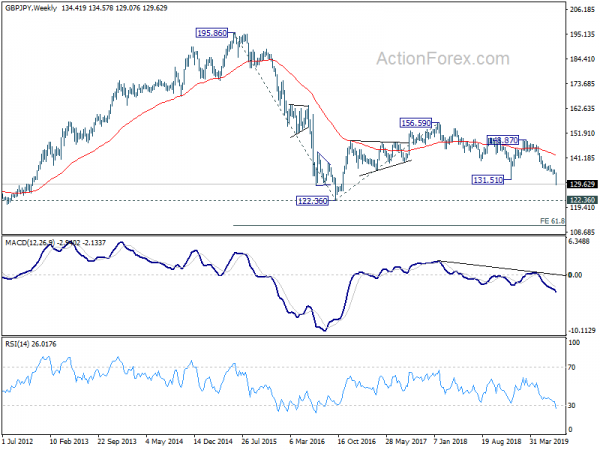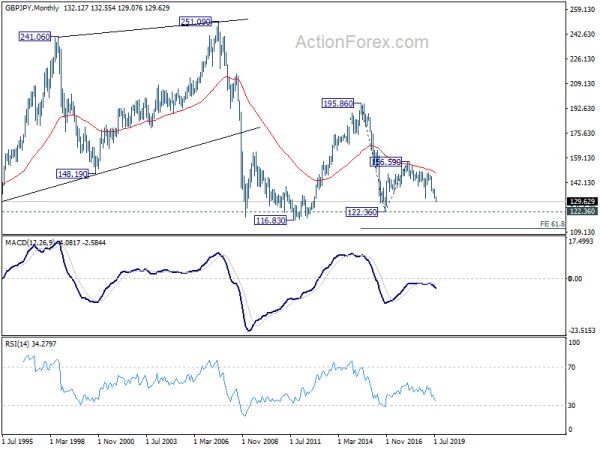The abrupt escalation of US-China trade war overshadowed Fed’s rate cut last week. As the trade talks in Shanghai yielded no constructive result, Trump announced to impose 10% on USD 300B in Chinese imports, effective September 1. The list include practically all untaxed Chinese goods, which should have much more direct hit to US consumers. China typically responded with hard-line comments, vowing to fight back with counter-measures. Additionally, trade tensions between Japan and South Korea also intensified, with both countries planning to take each other from the trade whitelist. That’s seen as a huge blow to the global tech supply chain.
Reactions in the bond markets to the developments were vigorous. Germany’s whole yield curve dropped below 0% for the first time ever, including 30-year (then closed at 0.0004). 10-year bund yield hit record low of -0.494 and closed there. US 10-year yield finally took out 2% handle with conviction, and closed at 1.855. In the currency markets, Yen and Swiss France rode on risk aversion and falling treasury yields to closed as the strongest. Dollar was the third strongest, somewhat helped by Fed Chair Jerome Powell. On the other hand, Sterling was the worst performing, on no-deal Brexit dear. Australian and New Zealand Dollar were the next weakest.
Markets Pricing in 100% of Sep Fed cut after trade war escalation
FOMC delivered the highly anticipated rate cut last week, lowering federal funds rate target to 2.00-2.25%. Fed Chair Jerome Powell tried to talk down the prospect of further easing. He described the rate cut as “mid-cycle adjustment” and further clarified he was “contrasting with the beginning of a lengthy cutting cycle”. However, re-escalation of US-China trade war prompted traders to add more bets to rate cuts. Indeed, fed fund futures are now pricing in 100% chance of another -25bps rate cut in September to 1.75-2.00%.
Dollar index resumed up trend, more upside in favor despite retreat
Dollar index surged to as high as 98.93 last week but retreated deeply to close at 98.07. The break of 98.37 indicates resumption of up trend from 88.25 (20180 low). Strong rebound from 55 week EMA as another sign of medium term bullishness, even though upside momentum is diminishing as seen in weekly MACD. In any case, near term outlook will remain bullish as long as 96.67 support holds. The up trend should extend to 78.6% retracement of 103.82 (2017 high) to 88.25 at 100.48 next.
10-year yield took out 2% firmly, more downside ahead
The steep decline in 10-year yield was one of the major factors dragging down the greenback towards the end of the week. TNX resumed the down trend from 3.248 (2018 high) to close at 1.855. 2.034 key support is finally considered firmly broken. Near term outlook will remain bearish as long as 2.148 resistance holds. Next target is 78.6% retracement of 1.336 (2016 low) to 3.248 at 1.745. Considering oversold condition, we’ll start to look for bottoming signal again between 1.336 and 1.745.
Conditions set for bearish reversal in US stocks, but confirmation needed
US stocks also dropped sharply last week on fear of trade war. It’s the same old story that conditions are there for a major reversal S&P 500 was close to 61.8% projection of 1810.10 to 2940.91 from 2346.58 at 3045.42. Bearish divergence condition is also seen in both weekly MACD and RSI. Yet, sustained break of 55 week EMA (now at 2811.82) is needed to be the first sign of medium term topping. Otherwise, outlook will stay bullish for extending the record run.
China SSE to extend medium term decline, as trade war weighs
The outlook of China Shanghai SSE composite index is totally different. SSE gapped down on Friday in wake of new tariffs by US. Fall from 3048.48 has resumed and rejection by 55 day EMA affirmed near term bearishness too. Current decline is see as part of the fall from 3288.45 and should target next cluster level. That is 61.8% retracement of 2440.90 to 3288.45 at 2764.66, and 61.8% projection of 3288.45 to 2838.38 from 3048.48 at 2770.33. Firm break there will pave the way to 100% projection of 2598.41.
Yuan could be the next imminent big risk to global markets
The Chinese Yuan would be the next imminent big risk for the global financial markets. After yesterday’s strong rise, USD/CNH (offshore Yuan) is back pressing 6.9875 key resistance. Decisive break there this key level resume the long term up trend from 6.0153. Next medium term target will be 61.8% projection of 6.2359 to 6.9804 from 6.6704 at 7.1305. Such development would likely drag down China SSE, which should then likely spillover to other Asian markets at least.
GBP/JPY Weekly Outlook
GBP/JPY’s decline accelerated to as low as 129.07 last week. The break of 131.51 support confirmed resumption of whole decline form 156.69. Initial bias stays on the downside this week for 122.36 low as next target. We’d be cautious on bottoming around there. On the upside, above 131.61 minor resistance will turn intraday bias neutral and bring consolidations first. But recovery should be limited below 135.66 resistance to bring fall resumption.
In the bigger picture, outlook remains clearly bearish with GBP/JPY staying well below 55 week and 55 month EMA. Medium term fall from 156.59 (2018 high) is still in progress. Next target is 122.36 (2016 low). We’d be cautious on bottoming there. But break of 135.66 resistance is needed to be the first sign of reversal. Sustained break of 122.36 will target next key level at 116.83 (2011 low).
In the longer term picture, for now, we’re treating price actions from 122.36 as a corrective pattern that could extend with another rebound. Hence, strong support could be seen at 122.36 to bring rebound. However, sustained break will raise the chance of resuming larger down trend from 251.09 (2007 high). Next downside target will be 61.8% projection of 195.86 to 122.36 from 156.59 at 111.16.




